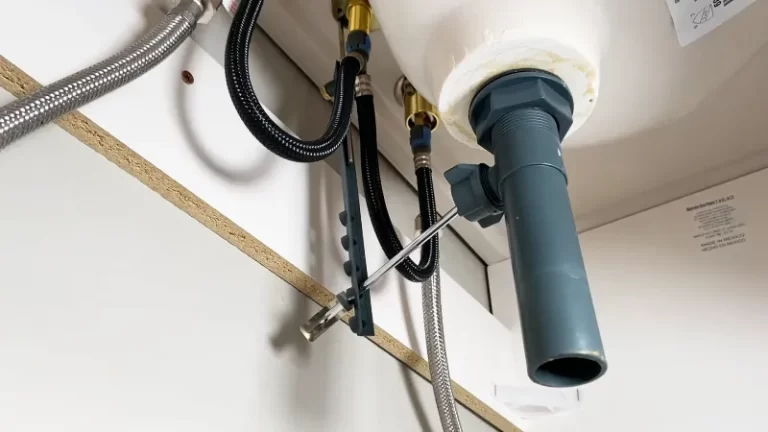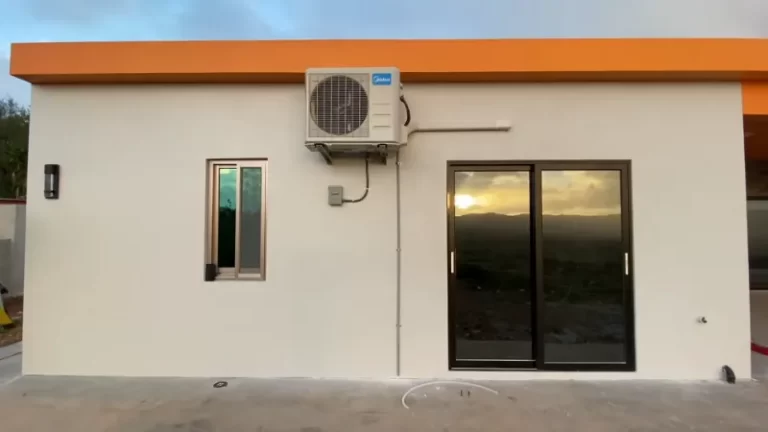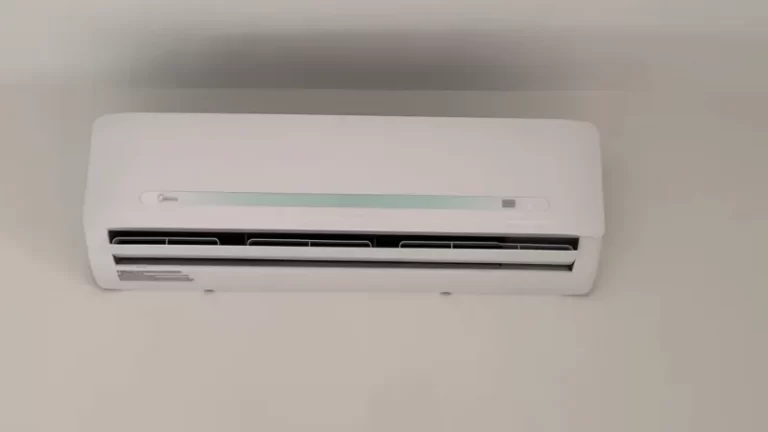Widest Window Fan Guide: Finally Cool Your Massive Windows
That oversized window is a fantastic feature, letting in light and offering a great view. But when the temperature rises, it becomes a challenge, as a stuffy, stagnant room is the last thing anyone wants. You’ve likely discovered that most standard window fans tap out, leaving a frustrating gap they just can’t cover.
This creates a cycle of problems: poor air circulation, reliance on expensive air conditioning, and resorting to insecure, makeshift solutions to fill the space. Many people with wide horizontal sliders, casement, or custom windows face this exact issue, feeling like a proper solution is just out of reach.
You'll Learn About
Why Standard Fans Don’t Make the Cut
The core of the problem lies in simple dimensions. The majority of twin window fans are designed for traditional double-hung windows, featuring accordion-style extenders that typically max out around 37 to 39 inches. For windows that are 40, 48, or even wider, these fans are simply not long enough.
This dimensional mismatch leads to significant gaps that compromise both efficiency and security. An improperly sealed fan allows hot air back in, lets cooled air escape, and can be an entry point for insects. Furthermore, a fan that isn’t securely braced in the window frame can rattle, vibrate, or even pose a falling hazard.
Measuring for Success: The Critical First Step
Before you can find a solution, you must have a precise understanding of the problem. Accurate measurement is the most important step in finding a fan that fits your extra-wide window. Grab a tape measure and get a precise reading of your window opening.
Measure the inside track where the fan unit will actually sit, from one side to the other. Do this at the top, middle, and bottom of the opening to check for any variations. Use the narrowest measurement as your guide to ensure a snug fit and proper seal.
Top Contenders: The Widest Window Fans on the Market
While the market for truly oversized fans is limited, several models stand out for their extended reach and powerful performance. These fans are specifically designed to tackle wider-than-average openings, giving you a strong starting point in your search for relief. A detailed comparison can help you identify the best fit for your specific needs.
Here is a breakdown of some of the leading models known for accommodating wider windows, highlighting their key features and maximum extension capabilities.
| Model Name | Maximum Width | Key Features | Best For |
|---|---|---|---|
| Vornado TRANSOM AE | Up to 40 inches | Alexa voice control, 4 speeds, electronically reversible airflow, weather-resistant case. | Smart homes and weather-exposed windows. |
| Air King 9166F Whole House | Up to 38 inches | Powerful 3-speed motor, industrial-grade construction, reversible. | Whole-house ventilation and large spaces. |
| Bionaire BWF0910AR-WCU | Up to 37 inches | Digital thermostat, remote control, 3 speeds, reversible airflow. | Automated temperature control and convenience. |
| Holmes HAWF2043 | Up to 37 inches | Manual controls, dual-blade operation, built-in extender screen. | Budget-conscious buyers needing reliability. |
The High-Reach Extender Models
Brands like Vornado and Air King are often praised for their ability to fit windows up to 40 inches. The Vornado TRANSOM series is particularly innovative, using a “Soft-fit System” with foam blocks that provide a superior seal in windows up to 40 inches wide. These models often come with premium features like remote controls and reversible airflow.
The Powerhouse Ventilators
For truly large spaces, the Air King 9166F Whole House Window Fan is a beast. While its maximum extension is around 38 inches, its power is unmatched. It’s designed to move a massive volume of air, making it a great choice if your goal is not just to fit a wide window, but to create significant cross-ventilation throughout a large area of your home.
Beyond the Box: Custom Solutions for Unique Windows
When even the widest off-the-shelf fan isn’t enough, it’s time to think creatively. For windows exceeding 40-45 inches, a custom or hybrid approach is often the best and only solution. These methods provide a secure, efficient, and surprisingly professional-looking result.
The Vertical Installation Hack
One of the most effective strategies for horizontal sliding windows is to install a standard twin fan vertically. This technique can solve the width problem instantly for many users. The fan is turned on its side and placed in the window opening, with the window itself sliding shut to hold it in place.
You will then have a gap above the fan, which is much easier to fill securely. A custom-cut piece of plexiglass or high-density foam board can be fitted into this space, creating a tight seal. This method is often more stable and secure than using accordion extenders at their absolute limit.

The Dual Fan Strategy
For truly expansive windows, such as those reaching 48 inches or more, using two fans side-by-side can be an excellent option. This approach allows you to double your airflow and achieve complete coverage. You can use two standard window fans or even two slim box fans that fit snugly within the window track.
The key to success with this method is sealing the small gap between the two fans. A simple foam weather-stripping adhesive strip can close this gap perfectly, preventing air leakage. This strategy turns a ventilation challenge into a high-performance cooling solution.
Installation Mastery: Sealing Gaps and Maximizing Efficiency
A perfect fit is crucial for peak performance. Even the most powerful fan will struggle if it’s not properly sealed. Gaps around the unit will undermine your efforts, allowing hot air to leak in and reducing the fan’s ability to create effective airflow. Before installing, it’s wise to ensure your window frame is in good condition. You might even need to know how to remove paint from aluminum window frames to get a clean surface for a tight seal.
Use high-quality foam weather stripping to close any and all gaps between the fan’s housing and the window frame. This small step makes a huge difference in cooling efficiency and prevents annoying rattles and vibrations. While this guide focuses on the absolute widest options, our overview of extra wide window fans provides great choices for more common large sizes where sealing is just as important.
Key Features to Demand in Your Widest Window Fan
When selecting a fan, especially for a large window, certain features are non-negotiable for comfort, convenience, and efficiency. Look beyond the width measurement to ensure the fan you choose meets all your needs.
Reversible Airflow (Intake/Exhaust)
The ability to switch between pulling cool air in and pushing hot, stale air out is fundamental. An exhaust function is critical for quickly removing heat from a room, especially in the evenings. A fan with reversible blades or motors gives you complete control over your home’s airflow, allowing you to create a refreshing cross-breeze.
Thermostat and Speed Settings
A built-in digital thermostat adds a layer of “set it and forget it” convenience. The fan will automatically turn on and off to maintain your desired temperature, saving energy and ensuring constant comfort. Multiple speed settings are also essential, allowing you to choose between a quiet, gentle breeze and high-velocity cooling.
Remote Control and Smart Features
A remote control is invaluable, especially for windows that are hard to reach or if you simply want to adjust settings from across the room. Some modern fans, like the Vornado TRANSOM AE, even integrate with smart home systems like Amazon Alexa, allowing you to control your fan with voice commands.
Frequently Asked Questions
What is the widest window a standard fan will fit?
Most standard twin window fans are designed to fit double-hung and slider windows up to 38 or 40 inches wide. Many models come with built-in extender panels to create a custom fit within this range. Always measure your window opening before purchasing to ensure a proper fit.
How can I install a fan in a window wider than 40 inches?
For windows wider than 40 inches, you may need a more creative solution as most standard window fans will not fit. One option is to purchase a fan and create a custom sleeve or panel out of plywood or plexiglass to fill the remaining gap. Another solution for very wide windows is to install two smaller window fans side-by-side.
Are wider window fans more effective at cooling?
Generally, a larger fan can move more air, which can lead to more effective cooling. Fans are rated in CFM (cubic feet per minute), which measures the volume of air they can move. For larger spaces, a fan with a higher CFM will provide better air circulation.
What type of window is best for a wide window fan?
Wide window fans are most commonly designed for double-hung or horizontal sliding windows. Some models can be installed vertically in slider windows as well. It is important to ensure the fan is securely held in place by the window sash and any gaps are covered to prevent air from escaping.
Can I use a wide window fan for both intake and exhaust?
Yes, many wide window fans, especially twin fan models, offer reversible airflow. This allows you to either draw fresh, cool air in from outside or exhaust stale, warm air out. Some models even allow you to have one fan on intake and the other on exhaust simultaneously for air exchange.
Conclusion: Reclaim Your Comfort with the Right Fan
Finding a fan for an exceptionally wide window doesn’t have to be a frustrating dead end. While standard models may not suffice, the combination of specialty wide fans and clever installation techniques puts a solution within reach. By measuring accurately, exploring top models, and being open to semi-custom approaches like vertical installation or using dual fans, you can achieve powerful and efficient ventilation.
Don’t let a non-standard window dictate your comfort. With the right knowledge and tools, you can conquer the heat, banish stuffiness, and transform your room into a cool, comfortable oasis.




